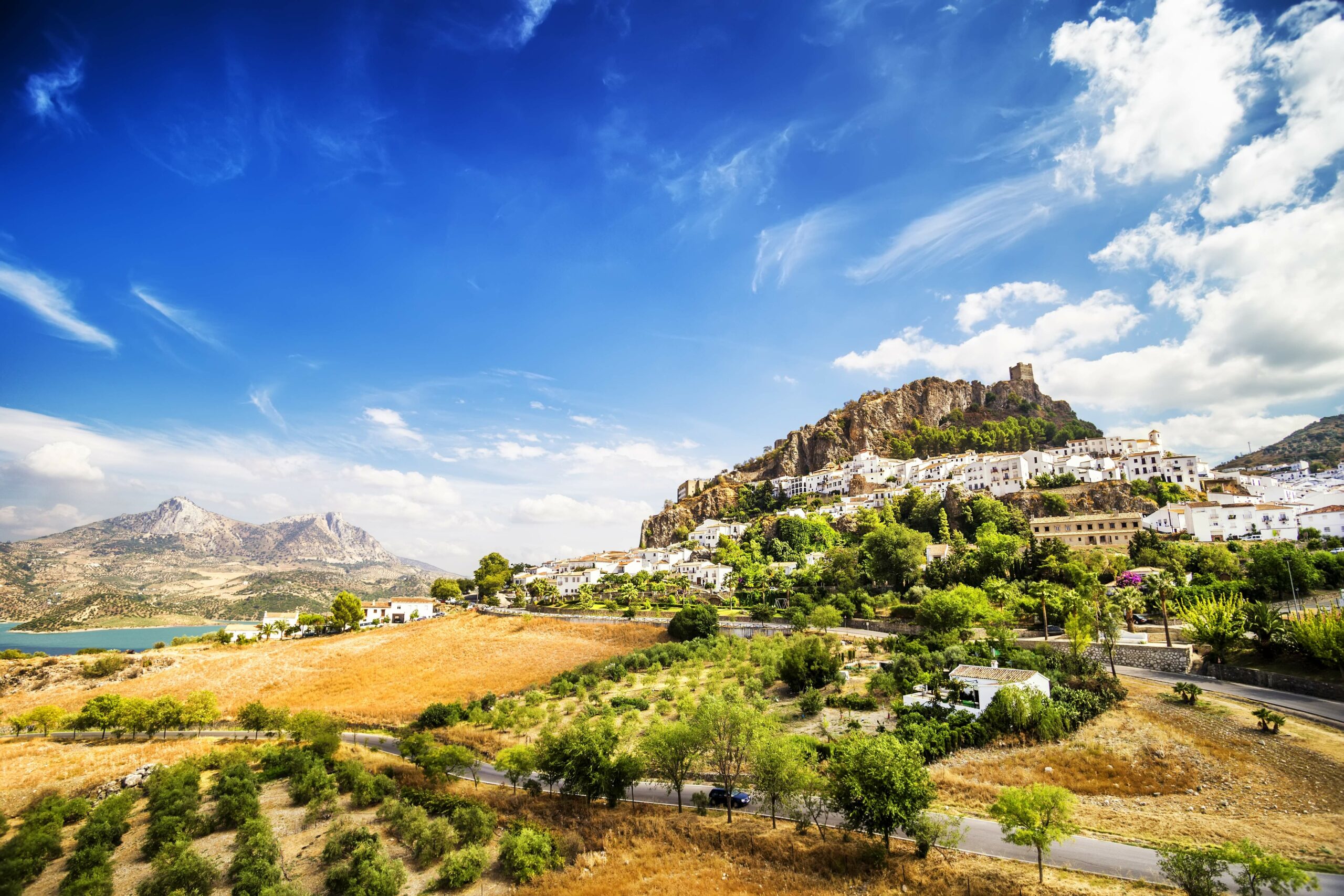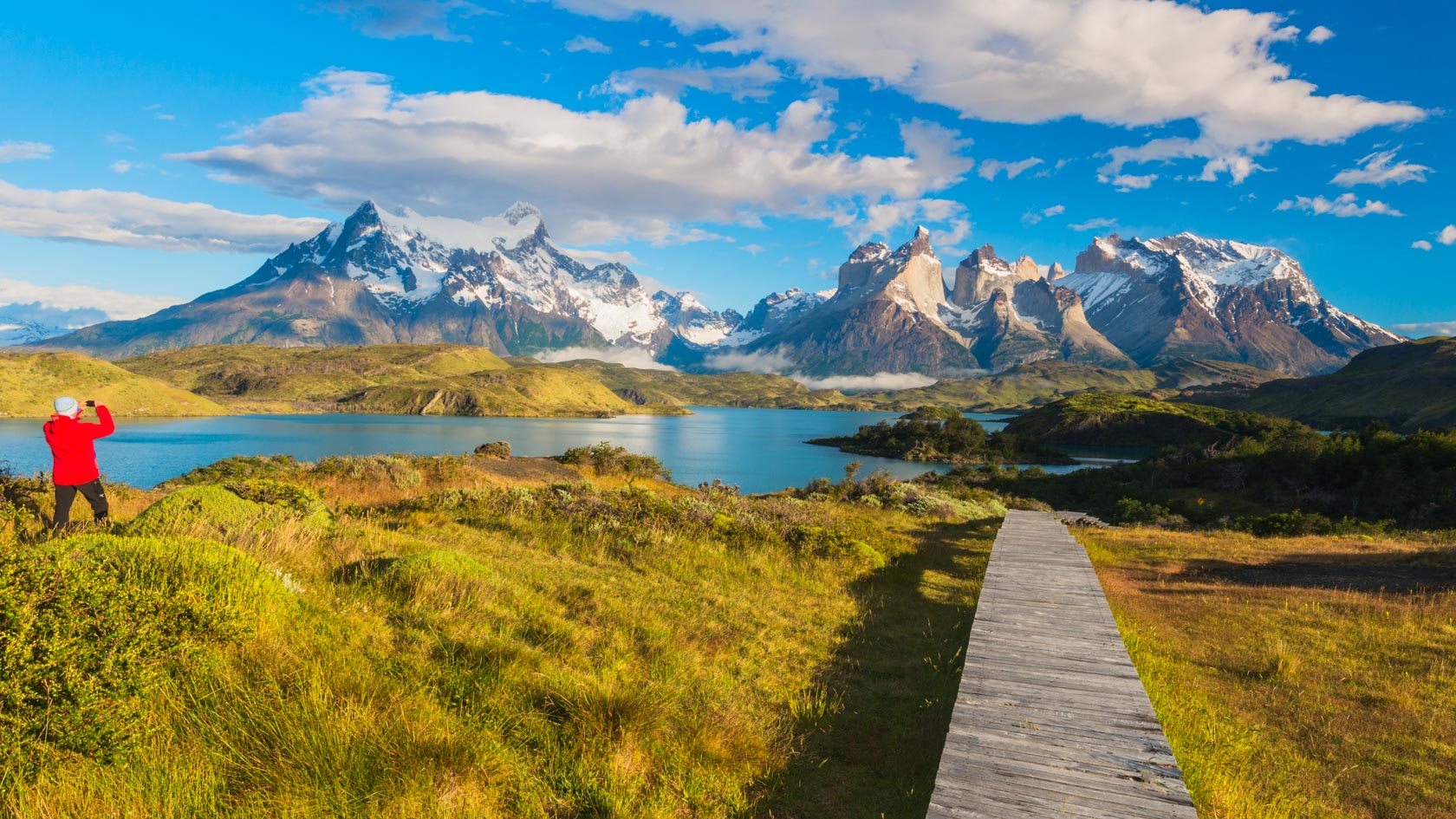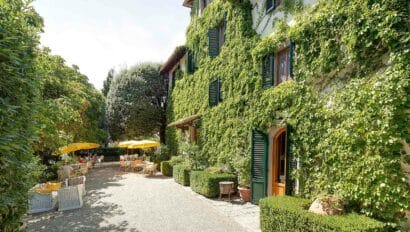We know that a wine’s flavor is intricately linked to where it’s from. A region’s climate, elevation and soil composition all affect the grapes from which a particular wine is made. The French have a word for this concept: terroir. In a way, when you drink a glass of wine, you’re getting a taste of where that wine is from. Appreciating the concept of terroir, and understanding how it applies to the bottle you’ve just opened, is part of wine’s appeal.
There’s no science to back this up, but wine lovers agree: a glass of wine seems to taste better when you’re drinking it in its country of origin. International wine trips have become mandatory for wine aficionados, but if your list of destination wine countries only includes France and Italy, it’s time to broaden your horizons.
Winemaking has become a truly global industry. Thanks in no small part to the spread of agricultural and communication technology, wines are now being produced on every continent except Antarctica. Great wines come from all over the world, and you’ll find amazing wineries in some truly surprising places. If you’re thinking about taking a wine tour, here’s our wine lover’s travel guide, featuring six countries that might not yet be on your radar.
Southern Spain
If you’re interested in wine but aren’t yet an expert, Spain might be the best place for your first wine tour. As with France and Italy, wine is a part of daily life. Spain is the world’s largest producer of grapes, with some 5 million acres devoted to vineyards. Tempranillo is the dominant variety; the red grape is found all over the country and can be grown in all sorts of climates. The two most popular white grapes are Albarino and verdejo – the Galacia region produces a great Albarino that is often served with local shellfish. Cava is the predominant Spanish sparkling wine; the Penedes region, just outside of Barcelona, is the largest producer.
 Venture into the central part of Spain, and you can find some up and coming wineries in and around Madrid. Spanish wines are typically not aged as long and don’t last as long in the bottle as their French or Italian counterparts, but that doesn’t mean that they’re not delicious. While great wines are produced all over Spain, the southern part of the country offers a classic Spanish treat – sherry. Sherry is the exception to the aging rule; wines used to make sherry are fortified with a grape spirit and then aged in wooden casks. The region of Andalucia contains the Sherry Triangle – Jerez, Sanlúcar de Barrameda, and El Puerto de Santa Maria. The Palomino, Moscatel, and Pedro Ximenez grapes grown here are unique to the region and are used to make Spain’s famous fortified wine.
Venture into the central part of Spain, and you can find some up and coming wineries in and around Madrid. Spanish wines are typically not aged as long and don’t last as long in the bottle as their French or Italian counterparts, but that doesn’t mean that they’re not delicious. While great wines are produced all over Spain, the southern part of the country offers a classic Spanish treat – sherry. Sherry is the exception to the aging rule; wines used to make sherry are fortified with a grape spirit and then aged in wooden casks. The region of Andalucia contains the Sherry Triangle – Jerez, Sanlúcar de Barrameda, and El Puerto de Santa Maria. The Palomino, Moscatel, and Pedro Ximenez grapes grown here are unique to the region and are used to make Spain’s famous fortified wine.
As a travel destination, Spain’s charms are innumerous; since we’ve recommended the Sherry Triangle, why not explore the rest of southern Spain? The cities of Seville and Grenada offer amazing food, and the Moorish influence can be seen everywhere, making for a truly unique travel experience. At the edge of southern Spain lies one of the world’s great natural treasures, the Rock of Gibraltar. Yes, you can go to the top; most take the cable car, but a brave (and fit!) few opt to hike up the Mediterranean Steps trail.
Portugal
Of course, port wine is what brings wine lovers to Portugal. The birthplace of port is the Douro Valley; the Portuguese government set its boundaries as a production region in 1756, making it the oldest officially demarcated wine region in the world – and the only official producer of the famous wine. Douro wine tours are a great way to learn about port; unlike most other wines, port is a fortified wine, meaning that a small amount of a distilled spirit is added during the fermentation process. Typically served with a cheese plate or a dessert, it’s a favorite among Portuguese and visitors alike. But it’s not the only wine produced in Portugal. The Vinho Verde region produces white wines, and the Tras-os-Montes region produces rosado, a unique, slightly effervescent wine.
As a destination, Portugal has plenty to offer in addition to great wines. Steeped in seafaring history, Portugal’s Atlantic coast is home to dozens of lovely coastal villages. You’ll find some great beaches for relaxing and sunbathing; for pure excitement, there’s nothing quite like standing on the shore of Nazare, watching surfers attempt to ride the area’s giant waves – some of which can reach up to 100 feet high!
Chile
When thinking of South American wines, most people tend to focus on Argentina. Chile, however, might have a claim as South America’s premier wine-producing country. European settlers in Chile are thought to have planted the first grapevines in the 1500s, so Chileans have had lots of time to perfect their winemaking craft. And Chile’s climate makes it unique: the Pacific Ocean to the west and the Andes mountains to the east moderate the temperatures. Deserts to the north and Patagonia to the south also help to geographically isolate the country.
 Its location is the reason that Chile is the only major wine-producing country that’s free of the vine-destroying phylloxera aphid. Chile is known for producing excellent cabernet sauvignon, but fans of exotic varietals will want to try Chilean wines made from the Carmenere grape. And simply being in the country is a treat – with over 2,600 miles of coastline, a border that backs up to one of the world’s most spectacular alpine regions and an average width of only 110 miles, you’re never far from the beach or the mountains.
Its location is the reason that Chile is the only major wine-producing country that’s free of the vine-destroying phylloxera aphid. Chile is known for producing excellent cabernet sauvignon, but fans of exotic varietals will want to try Chilean wines made from the Carmenere grape. And simply being in the country is a treat – with over 2,600 miles of coastline, a border that backs up to one of the world’s most spectacular alpine regions and an average width of only 110 miles, you’re never far from the beach or the mountains.
Istria
We’ll forgive you if you’ve never heard of Istria. It’s not a country, but a wine region that’s shared by Croatia, Slovenia and Italy. Sprawling across Croatia’s northwestern Istrian Peninsula, wines have been produced in the region for hundreds of years, but it’s only recently that wine travelers have taken notice. And for good reason. Istrian white wines have benefitted from modernized production techniques, and following the end of the Cold War have been showing up in markets and restaurants across Europe. Malvasia, an Old World light-skinned grape, is most common, but you’ll also find other white varieties, including muscat, chardonnay, and sauvignon blanc.
It’s not just the wines that make Istria worth visiting. Croatia has long been one of Europe’s best-kept secrets, thanks to its beautiful scenery and generous people. Istria’s vineyards are bordered by some of Europe’s most incredible beaches, and the coastal towns are exceedingly charming and hospitable.
New Zealand
Boasting some of the most spectacular terrain on earth, the Land of The Long White Cloud has a burgeoning wine scene as well. It’s hard to believe, given the rugged mountains and exotic beaches, but there are sections of New Zealand that provide great growing conditions for wine grapes, particularly sauvignon blanc. The Marlborough region is where some 70% of New Zealand’s wine production occurs, the bulk of that being white wines. You’ll find some excellent wines here, along with the legendary Kiwi hospitality. Although not as well known, the Bay of Plenty region has started to produce some reds, thanks to its fruit-friendly climate.
If you need a break from wine, the area is also known for its cider and local beer, perfect for watching a rugby game at one of the many pubs. And movie buffs can visit some of the locations used for the Lord of The Rings movies; the set of Hobbiton, Frodo and Bilbo’s home village, was preserved and is open for viewing.
South Africa
A wine tour and a safari in one trip? A safari wine tour sounds awesome, and South Africa is starting to gain attention for its wines. But winemaking isn’t new to the country. The Stellenbosch region, about 25 miles east of Cape Town, has been producing wines since the beginning of the 18th century. Located in one of the world’s great landscapes, South Africa’s 250,000 acres of vineyards have been producing a surprising variety of grapes, both white and red; along with sauvignon blanc, chardonnays, and chenin blanc, shiraz, cabernet sauvignon and pinot noir are grown in the regions around Cape Town. Cape Town itself is a great reason to visit South Africa – the bustling modern city has fantastic nightlife and picturesque beaches. The flat-topped Table Mountain looms over Cape Town, and a gondola ride to the top of this iconic peak is an experience not to be missed.

Paired with South Africa’s unique culinary offerings – and the South African love of grilling and eating outdoors, among the country’s amazing scenery and wildlife – a South African wine trip is an amazing experience.
Having a fantastic wine travel experience doesn’t require you to visit France or Italy. From enjoying a sherry after a paella dinner in Spain to sipping on a chilly glass of white in a tent on the African plains, today’s wine tours are a great way to experience the world’s wines – immersed in the countries and cultures that created them. Explore all of our different wine tours in our Trip Finder today.




